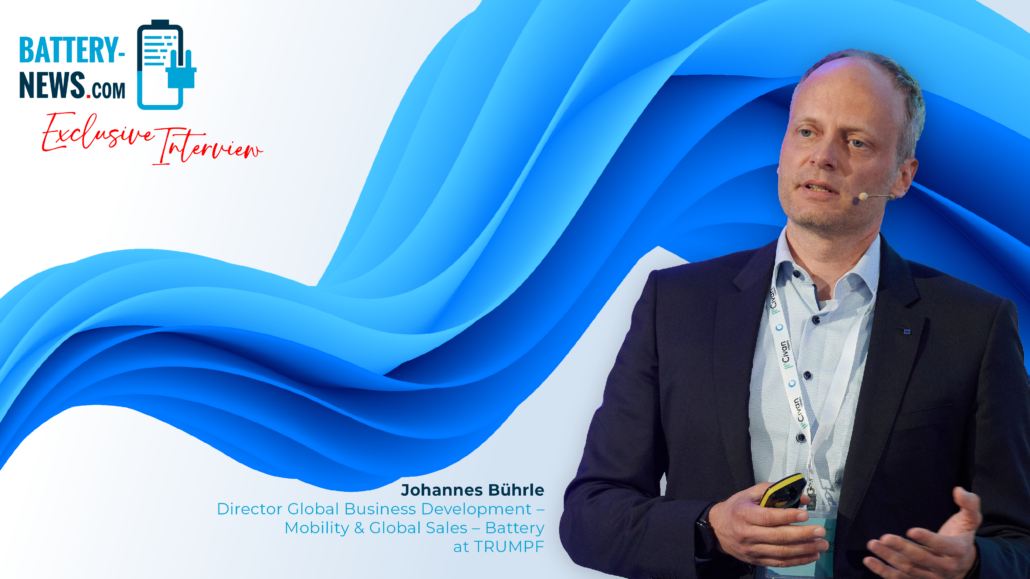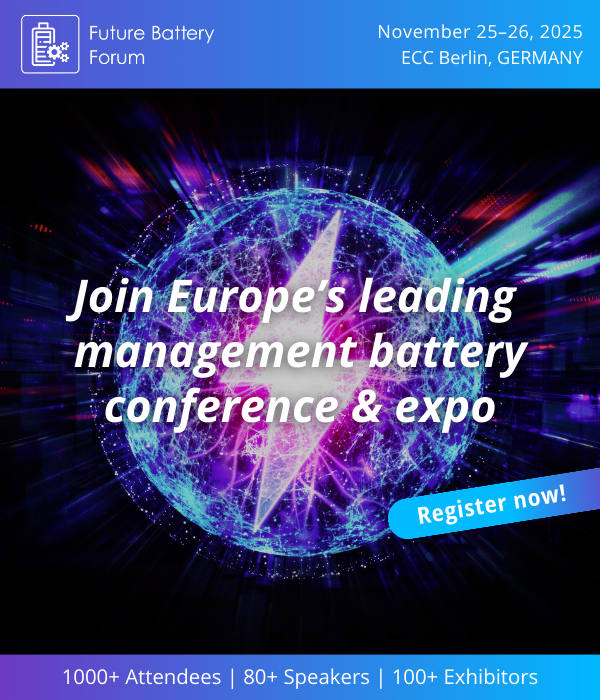Battery is king these days. It is no wonder, then, that TRUMPF is bringing technological innovations to the battery value chain. In an exclusive interview with Battery-News, Johannes Bührle, Director Global Business Development – Mobility & Global Sales – Battery at TRUMPF, reveals the innovations with which the company is opening up new possibilities in battery recycling and electrode drying.
Battery-News: Your company recently introduced a new laser technology for recycling electric vehicle batteries. How does the process ensure greater efficiency and what impact will it have on meeting the new EU recycling quotas?
Johannes Bührle: From a laser technology perspective, recycling is divided into two areas for us. On the one hand, we deal with the recycling of “end-of-life” batteries, which essentially involves separating packs and modules down to the cell level in order to create materials of the same type and to efficiently separate material combinations from each other. Housing screws are often glued and can no longer be loosened mechanically. It is therefore much more efficient and faster to cut such connections in a targeted manner, for example to separate aluminum from a steel screw and thus open the housing.
Battery-News: Is this process economical?
Bührle: We assume so, and that will soon become clearer as more batteries are returned – depending on how many variants there are in the future. Of course, it makes a process much easier if the same components keep coming back. If there is a wide range of variants, however, the machine has to run with many different programs. Economic efficiency is also strongly influenced by how chemistry in the cells changes. Will there continue to be NMC or will there be more LFP electrodes in the future? These are all factors that will make the recycling process more or less attractive.
“Our approach is to irradiate the surface with the laser so that the active material separates from the substrate.”
Battery-News: What is the second area of recycling that is of interest to your company?
Bührle: In contrast to the battery’s “end of life”, our second area deals with the waste that arises when starting up electrode production. Particularly in such highly industrialized processes, a few kilometers of poor-quality electrodes can quickly be produced, which ideally are recycled by separating the copper, the aluminum as a substrate, and the active material. Currently, this is done mechanically with a great deal of effort using a jigging process. Instead, our approach is to solve this thermally and to irradiate the surface with the laser so that the active material separates from the substrate. It will be interesting to see how nickel, cobalt, and so on react to this – in other words, whether any damage is caused by the laser. We use ultrashort pulse lasers so that the interaction time is as short as possible.
Battery-News: The partnership between TRUMPF and Cellforce aims to improve the performance and energy density of high-performance battery cells. How do your laser systems help to optimize the production processes and increase battery capacity?
Bührle: We are in close contact with Cellforce, where we primarily consider the laser applications in the entire battery production chain together. This begins with drying the electrodes, where the DÜRR is involved as an additional partner of the Cellforce Group with its special expertise. The DÜRR company has a unique selling point: It uses a process for double-sided coating like no one else does. In this constellation, we have set up a pilot plant where we use a hybrid drying process that combines laser with conventional drying processes. This results in enormous advantages in terms of plant footprint and operating costs.
“We have succeeded, for example, in reducing spatter and increasing the yield rate.”
Battery-News: How do you achieve this specifically?
Bührle: This is possible because the laser has a very high electrical efficiency, and the surface of the electrode is irradiated very homogeneously in a continuous process. The conventional drying process is actually only there to get the moisture and the solvent out of the drying chamber. In addition, there are other processes – especially the joining processes – in which we use the laser for contacting or sealing the cells for welding. We combine a scanner technology with our sensor and, in some cases, with AI filters to better monitor the process. In beam forming, for example, we have succeeded in reducing spatter and increasing the yield rate.
Battery-News: What impact will the integration of laser processes with green wavelengths – which studies show to be significantly more sustainable – have on future production?
Bührle: Green lasers offer certain advantages, but they also have their disadvantages. One advantage is the high absorption on highly reflective materials, such as copper. In many electronic components, where thin materials are used and where the degree of heat input is important, the green laser is a perfect fit. But how successful it is in the cell area is determined by the material combinations. Especially when no copper is used, similar results can often be achieved with a single-mode laser, which is more cost-effective to invest in. Green laser is limited in power and beam quality. If we are dealing with thicker materials and cell connections, the infrared laser is the better economic solution.
“I am convinced that there will be a battery evolution – in small steps.”
Battery-News: What will the significance of battery production be in ten years? What technological advances and possibilities do you expect by then?
Bührle: In Germany, people are talking about electric mobility being dead again. I believe in e-mobility. I believe there is no way back. Of course, there will also be hybrid solutions, because electric mobility is not the only option, and it is not the best option for all areas. There are many opinions and many studies. In any case, innovative battery technologies such as the solid-state battery still have many technological hurdles to overcome, so there will certainly be no major industrial turnaround in the next five to eight years. But I am convinced that there will be a battery evolution – in small steps which improve cell chemistry. Battery modules will probably disappear, allowing cylindrical and prismatic cells to become a direct part of the vehicle chassis and replace pouch cells. Beyond such format developments, however, I do not expect any major changes in the near future.




